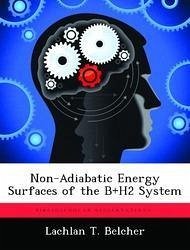In order to solve the dynamics of a system, the kinetic energy operator of the Hamiltonian must be disagonalized. Diagonalization requires rotation of the system into a non-adiabatic representation. This rotation is a coupling angle determined by the derivative coupling terms. Derivative coupling terms are calculated using Columbus and Brooklyn, software packages. Seperation of internal dynamics characterized by Jacobi coordinates, and external dyanamics characterized by a set of Euler angles and the center of mass position, requires a transformation from Cartesian coordinates to Jacobi coordinates required for subsequent dynamical calculations. Previous attempts to solve for non-adiabatic energy surfaces in this manner have failed because of an ambiguity in selecting the correct variable for describing the overall rotation of the B+H2 system, giving answers that do not agree with theory. This error, which lies within the method of converting from one coordinate system to another, is discovered and corrected. By way of this correction, correct coupling angles are calculated, and non-adiabatic energy surfaces are calculated.
Hinweis: Dieser Artikel kann nur an eine deutsche Lieferadresse ausgeliefert werden.
Hinweis: Dieser Artikel kann nur an eine deutsche Lieferadresse ausgeliefert werden.







